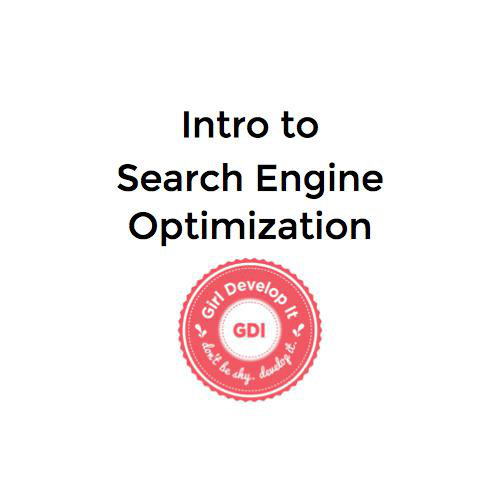Marketing Fundamentals

June 22-23, 2016
Thank you for joining us for this part-time course!
If you'd like more information about our programs, please feel free to send an email to hello@grandcircus.co.

@grandcircusco
Day 1
-
Overview of digital marketing
-
Review of main marketing channels
-
Hands-on activity: you become the consultant
Day 2
-
Content marketing
-
Hands-on activity: all about you(sers)
-
The trifecta: tracking, data & stats
-
Optimization
-
Certification
Schedule
Workshop Takeaways
- Learn the main digital marketing channels, including social, email marketing, SEO, PPC, content marketing and when to use each
- Learn how to set up a basic digital strategy specifically for your business & goals
- Identify which data points are important for managing a digital strategy, and how to track them through Google Analytics and Facebook Tracking
- Understand how to optimize a digital campaign to produce better results
- Come away with a certificate of course completion
Introductions!
Gabe Kwakyi, Co-Founder & CEO at Incipia (App development + marketing)
Twitter: @gabetimes
Leah Yanuszeski, Digital Marketing Specialist
Twitter: @lyanuszeski
Email: lyanuszeski10@hotmail.com
Now You!
Enough about us:
-
Who are you?
-
What do you hope to get out of this class?
-
Beverage of choice?
What is Digital Marketing?
And why you should care.
"In simplistic terms, digital marketing is the promotion of products or brands via one or more forms of electronic media..."
Overview of a Digital Strategy
Strengths of digital:
- Trackable
- Scalable
- Targetable
- Customizable
Digital strategy fundamentals:
- Know your target market
- Know your goals
- Know your data
High Level

Advertising
- Costly
- Often ignored
- Immediate
- Easy to scale
- Better ROI the more you spend
Organic
- Free
- Most trusted
- Take time to build results
- Better ROI the more time you invest
Prospect Quality v. Conversion Probability
| Channel | Conversion Probability | Prospect Quality (target market?) |
Scale |
|---|---|---|---|
| High | High | Low | |
| PPC | Medium-High | High | Medium |
| Affiliate/ Influencer |
Medium-High | Medium | Medium |
| Social | Medium | Medium-High | High |
| SEO/Content Marketing | High | High | Medium |
| Display | Low | Low | High |
Connecting with Your Audience
People can now converse with your brand or product.
It's a true conversation.
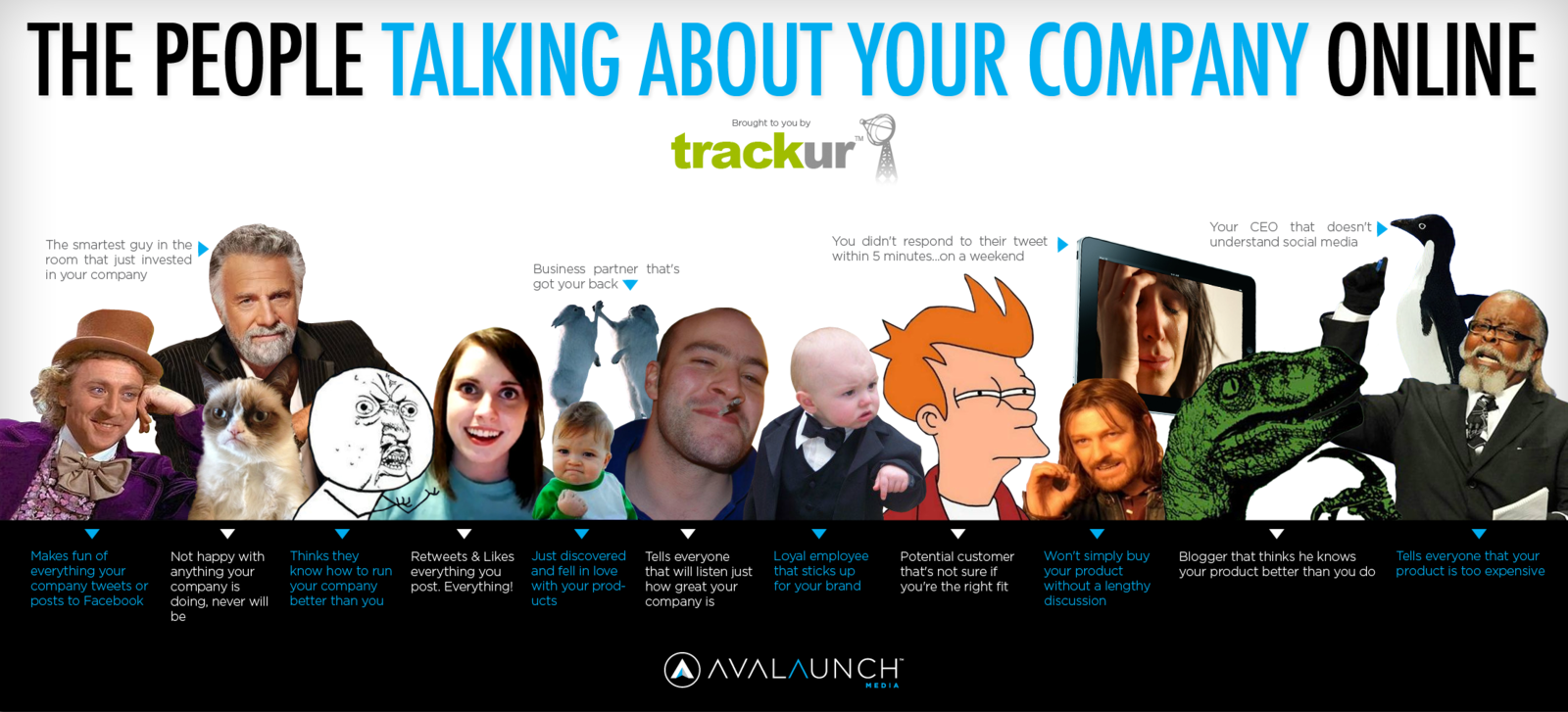
Email Marketing
An inbox is a great way to directly connect with your users.
Index:
- Anatomy of an email
- To whom the email bell tolls
- Important metrics
Anatomy of an Email
Make sure...
- Your emails are QA'd for mobile and across email platforms
- Your emails are personable and conversational
- Your emails are scannable and easy read
- Your user's next step is clear.
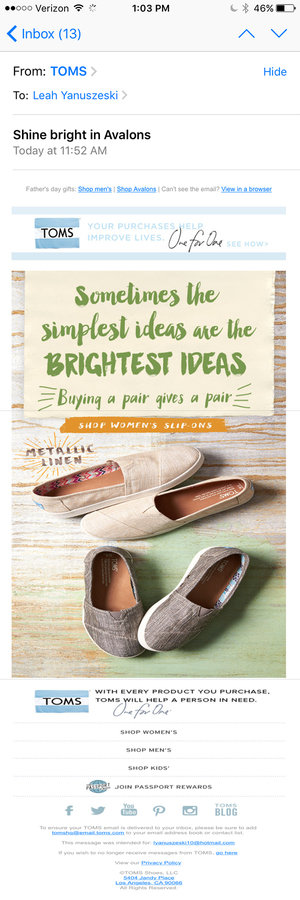
Footer
Where all the important things are.
"The CAN-SPAM Act of 2003, signed into law by President George W. Bush on December 16, 2003, establishes the United States' first national standards for the sending of commercial e-mail and requires the Federal Trade Commission (FTC) to enforce its provisions."
Learn more here.
Your Subscribers
- Build your list
- Organically grow your email subscribers
- Email opt-in form for whitepaper download, coupon, etc.
- Send a friendly welcome email
- Organically grow your email subscribers
- Send to your list
- Think about what your subscribers want to read
- Be honest about your sales messages
- Segment your list to better target your messages
- Keep your list
- Develop a content calendar so you can better your content and cadence
Important Metrics
- Deliverability and Bounce Rate
- Remove old subscribers
- Keep current lists
- Open Rate
- Subject and pre-header content
- Time of send
- CTR Rate
- A/B test your CTAs
- Think about excluding/including links within your text
- Conversion Rate
- Test landing pages
- Unsubscribe Rate
- Develop and optmize your email campaign
...and how to improve them
So, how do I do this?
Use email marketing software!
- MailChimp
- Emma
- Exact Target
- Constant Contact
- Silverpop
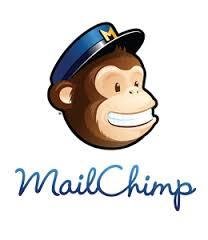

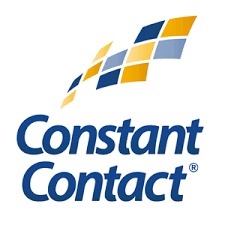
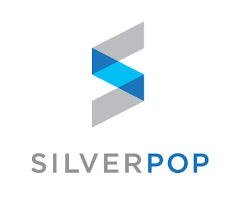

Organic Social
Like, tweet, favorite and snap your food and pet pictures.
Index:
- Overview of channels
- More
- Publishing
What it is:
- Social network that allows users to create and manage personal and business pages
- Mostly used for keeping in touch, messaging and killing time
- Recent updates include immersive ads and content, "reactions," and new messaging features
What it looks like:
- "News Feed" style of information curates content specific to users
- "Profile" allows users to customize information and share photos, videos and more

Created Feb. 4, 2004 by Mark Zuckerberg in a Harvard College Dorm Room
- Video and images work great
- Short, engaging messages
- Location, feelings and other stuff
- What's trending

What it is:
- A social network with a focus on short snippits of conversation
- Mostly used for instant updating and trending topics along with micro-conversations between profiles
- Recent updates include lack of chronology and discounting images and handles against the140-character limit
What it looks like:
- "Timeline" allows for tweets to populate from those you're following
Created March 2006 at a podcasting company called Odeo

What it is:
- App dedicated to the taking and sharing of photos
- Almost exclusively used for taking and editing photos (of your food or cat)
- Recent updates include moving away from chronological post order and new logo
What it looks like:
- Feed allows users to scroll through and favorite images taken by those her/she follows
- Filters allow users to quickly edit photos for a "photoshop-ed" look
Created October 2010 by two fellas in San Fransico

What it is:
- A business-oriented social network designed for professional networking
- Mostly used for business connections and curating new professional relationships
What it looks like:
- "Profile" acts like an online resume, allowing users to customzie current positions, skills, etc
- Newsfeed feature allows for businesses and individuals to publish updates and content pieces
Founded by 5 fellas in December of 2002


...and many more.
Other popular networks include:
- Google+ (300 million users)
- YouTube (over 1 billion)
- Pinterest (100 million users)
- Periscope (10 million users)
- Reddit (36 million users)
- Snapchat (100 million users)
Publishing
Keep a Content Calendar
- Schedule your updates
- Align with events, product launches, marketing campaigns, etc.
- Specific messaging and audience targeting per network
Optimize...
- the day and time of your posts
- your images
- your hashtags and descriptions
Engage
- Converse with your audience
- Create compelling content to expand your audience

Signs you may be over your head...
- You describe social media as "whatever the millennials are doing these days."
- You miss a tweet or Facebook message for a week.
- You're already busy at work.
- You have some haters online.
- You don't know what a social media strategy is.

Paid Social
Pay for people to view, like or favorite your posts.
Index
- Social platforms to advertise on
- Campaign hierarchies
- Examples
Advertising on: Facebook
- Largest social scale
- Algorithm-driven
- Incredible targeting power
Campaign Types
Most popular
- App installs (FB, IG)
- Website conversions (FB, IG)
- Lead capture
- Promoted post (FB, IG)
Other campaign types:
- App re-engagement (FB, IG
- Website clicks (FB, IG)
- Get more page likes (FB, IG)
- Watch a video (FB, IG)
- Reach people near your business
- Attend event
- Claim an offer
Targeting
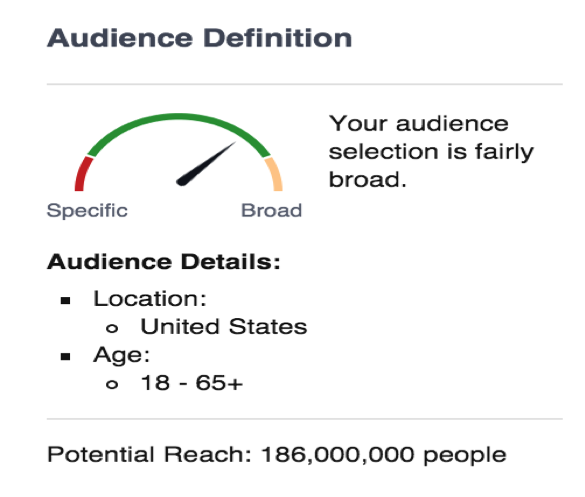
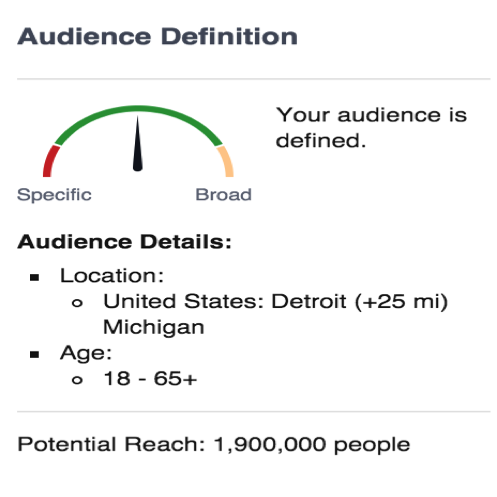
Why Target Fewer Users?
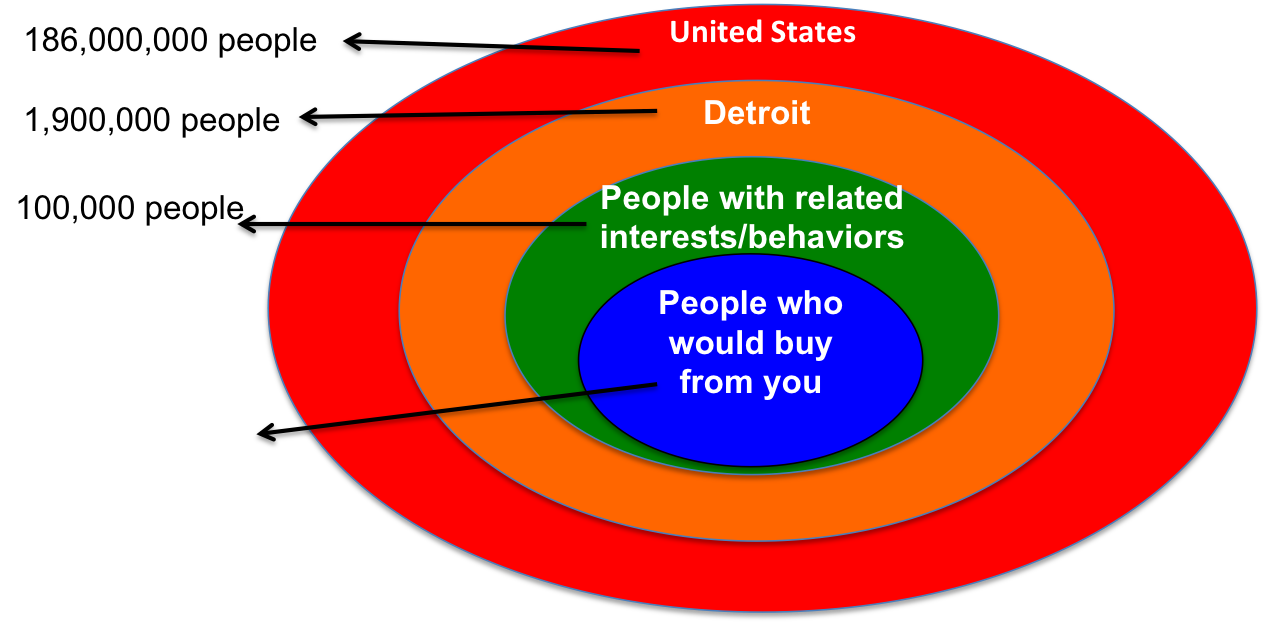
10,000 people
Diagram of a Facebook Ad
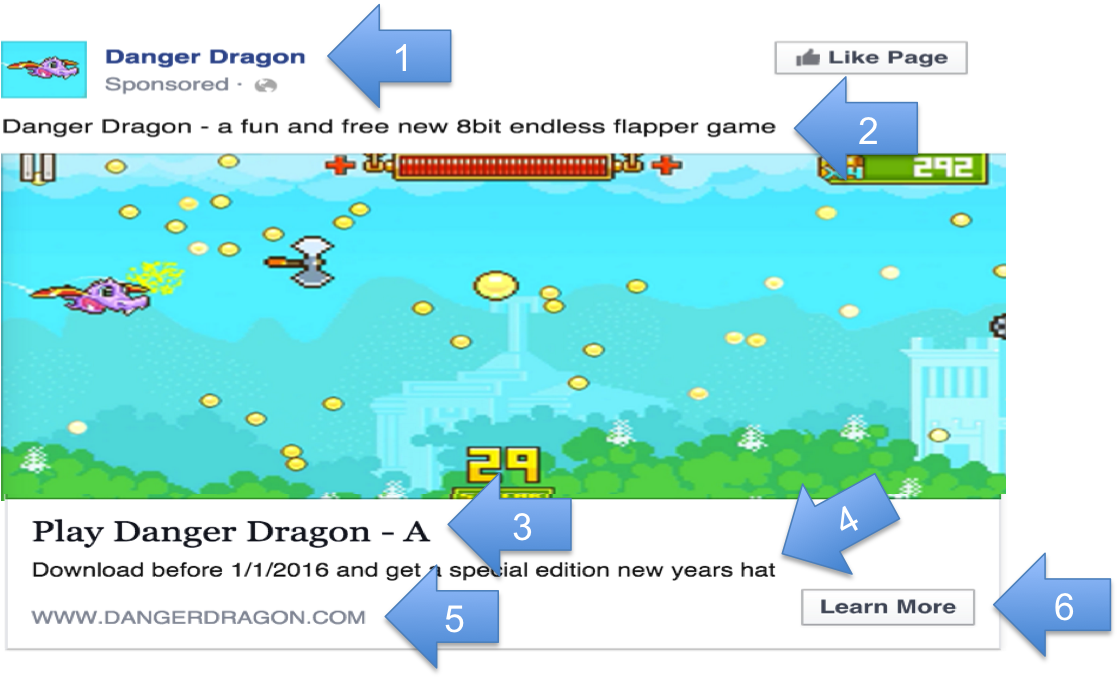
- Page title
- Ad text
- Headline
- Link description
- Display URL
- Call to action (CTA)
Ad Manager
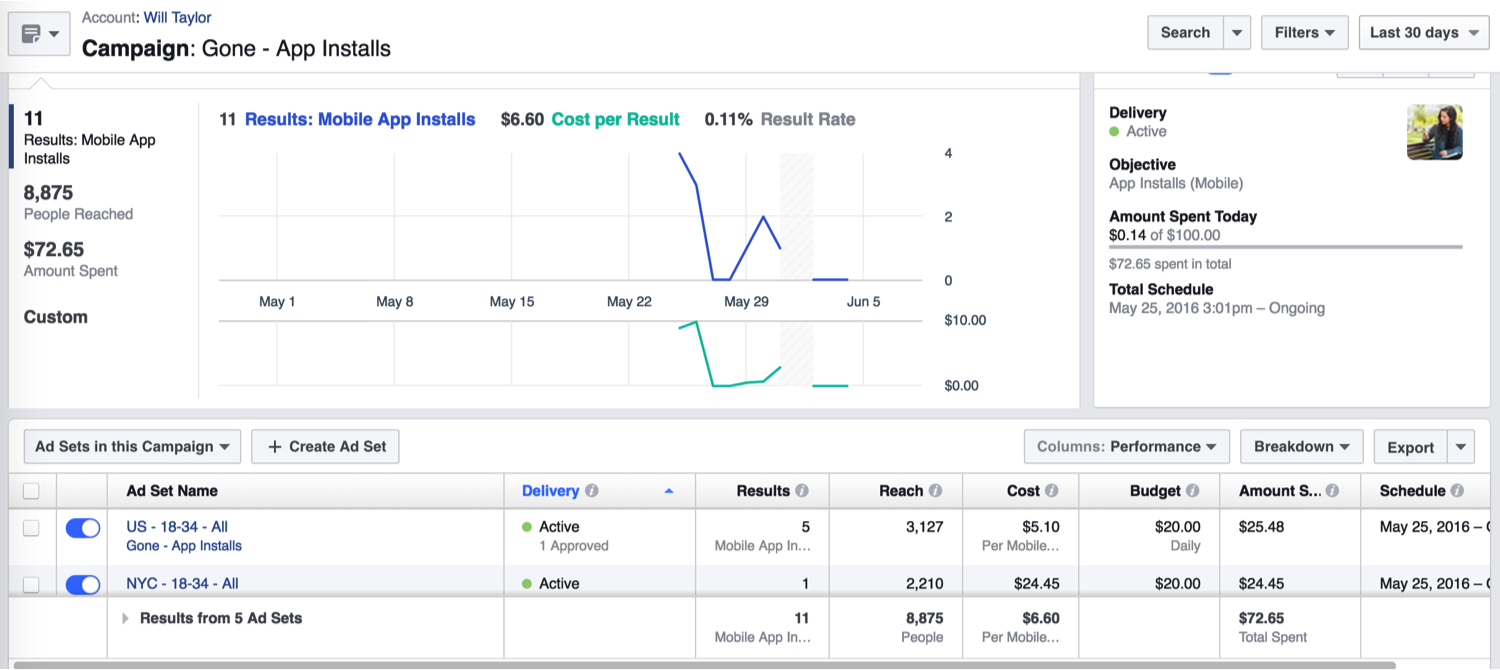
Audience Insights
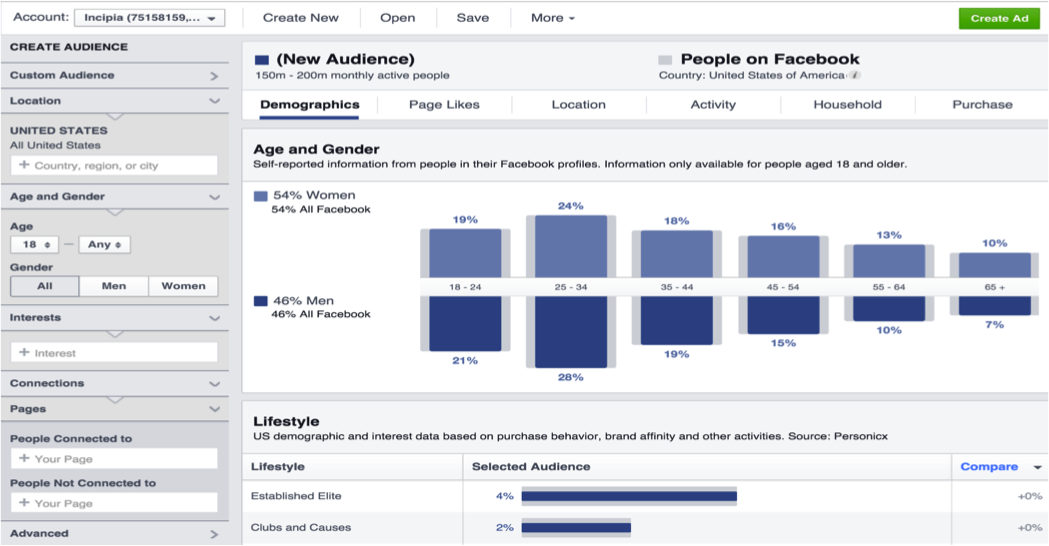
Custom Audiences
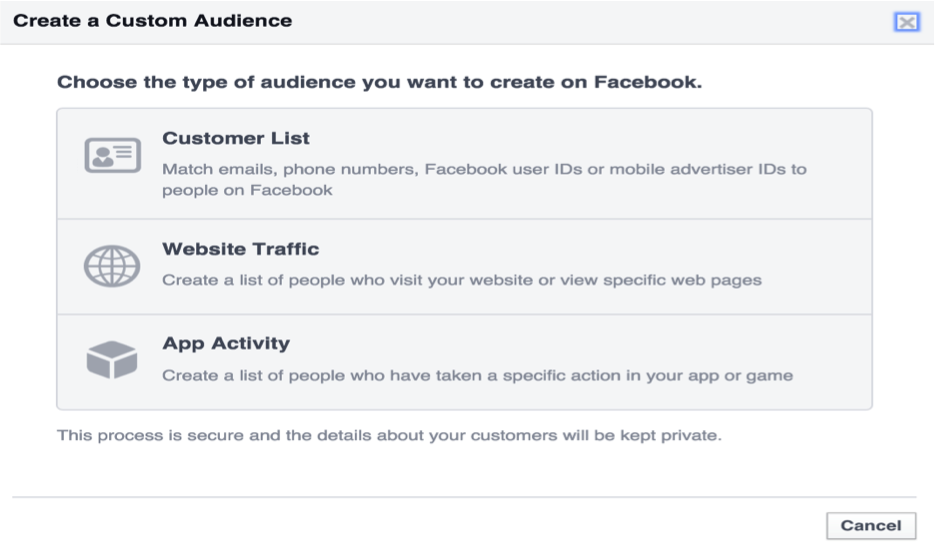
Lookalike Audiences
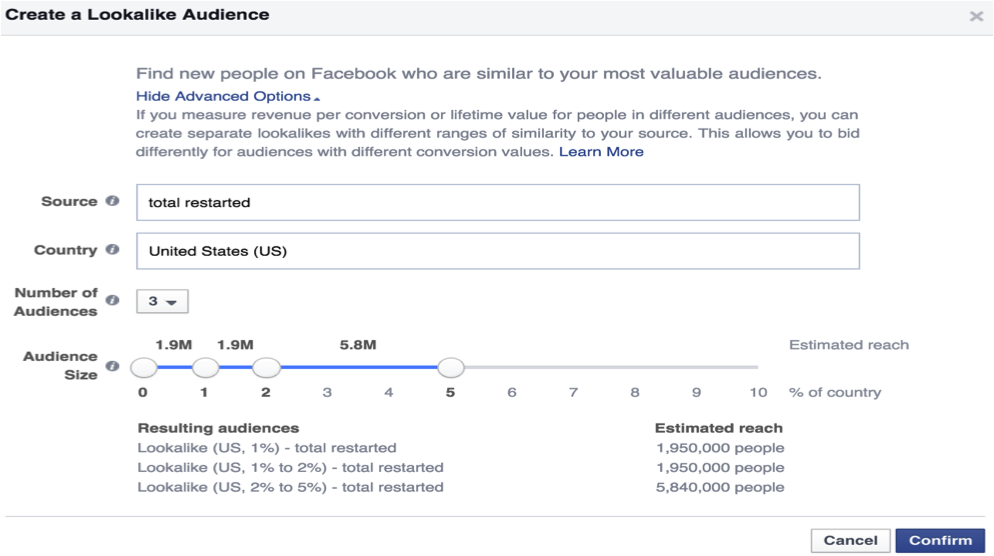
Find people who "look like" a custom audience
Advertising on: Twitter
- Similar setup to Facebook
- Smaller scale than Facebook
- (Anecdotally) more engaged users than Facebook
- No 20% image-to-text rule
Advertising on: LinkedIn
- Less powerful platform than social/Adwords
- Less flexible bidding
- Not objective-based
- Just text ad and sponsored update
- Good for B2B
Advertising on: PPC
- Pull marketing
- Keyword clarity
- Match types
Adwords Campaign Types
- Web search
- Web display
- Mobile app install/re-engagement
- Universal app install
- Video
- Shopping
Demo of Search Auction

Keyword Matching

Negative Keywords

Facebook Campaign Hierarchy
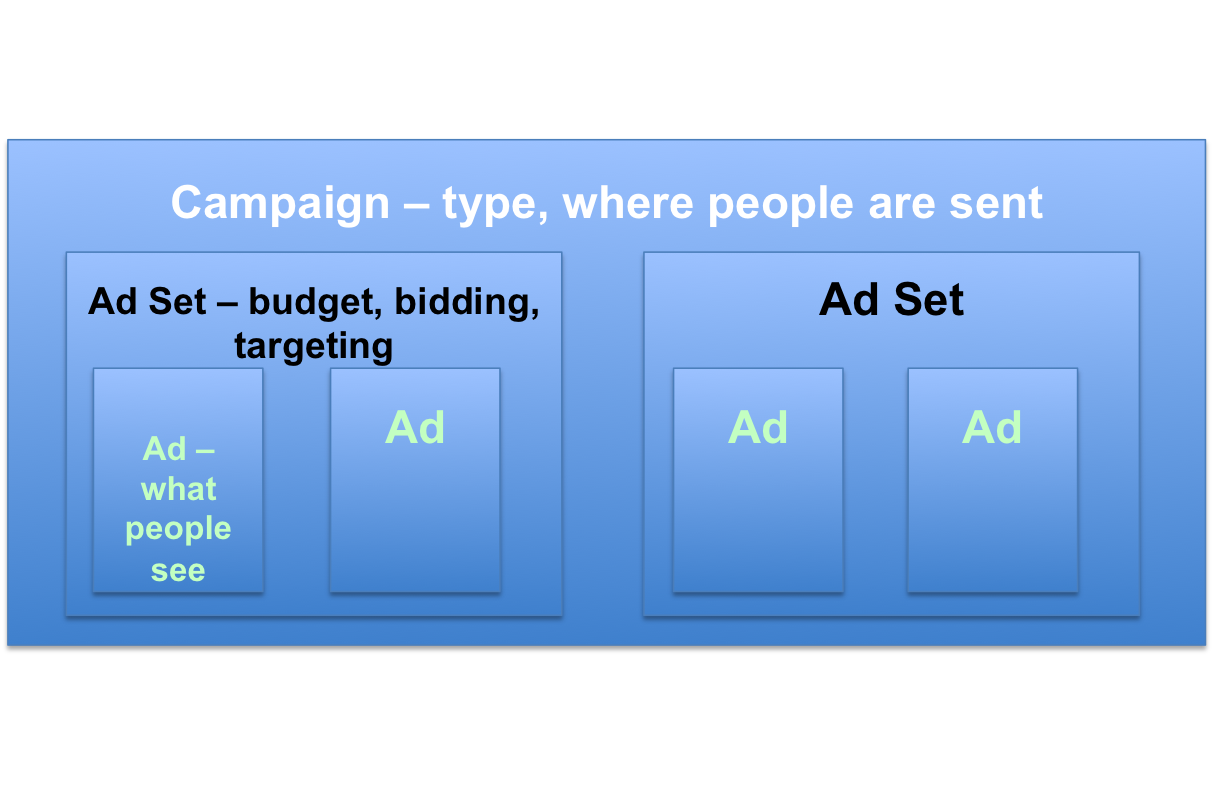
Twitter/LinkedIn Campaign Hierarchy
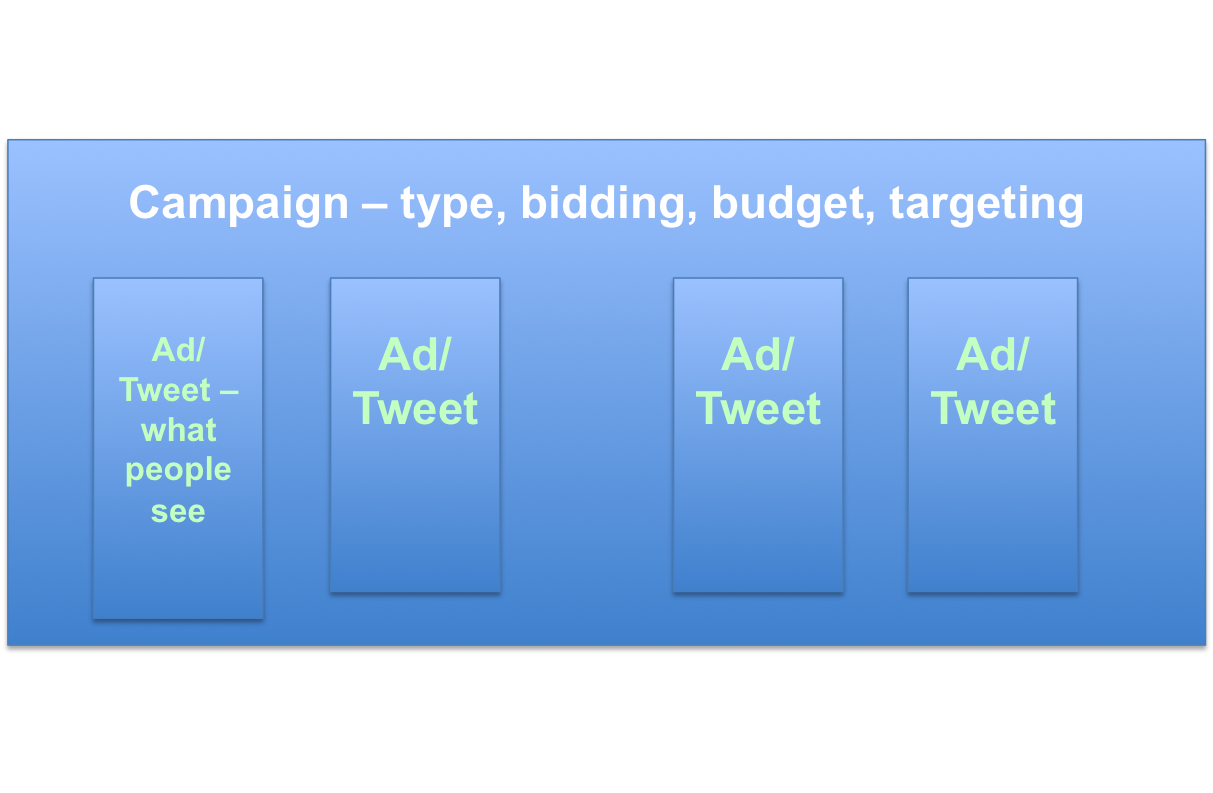
AdWords Campaign Hierarchy
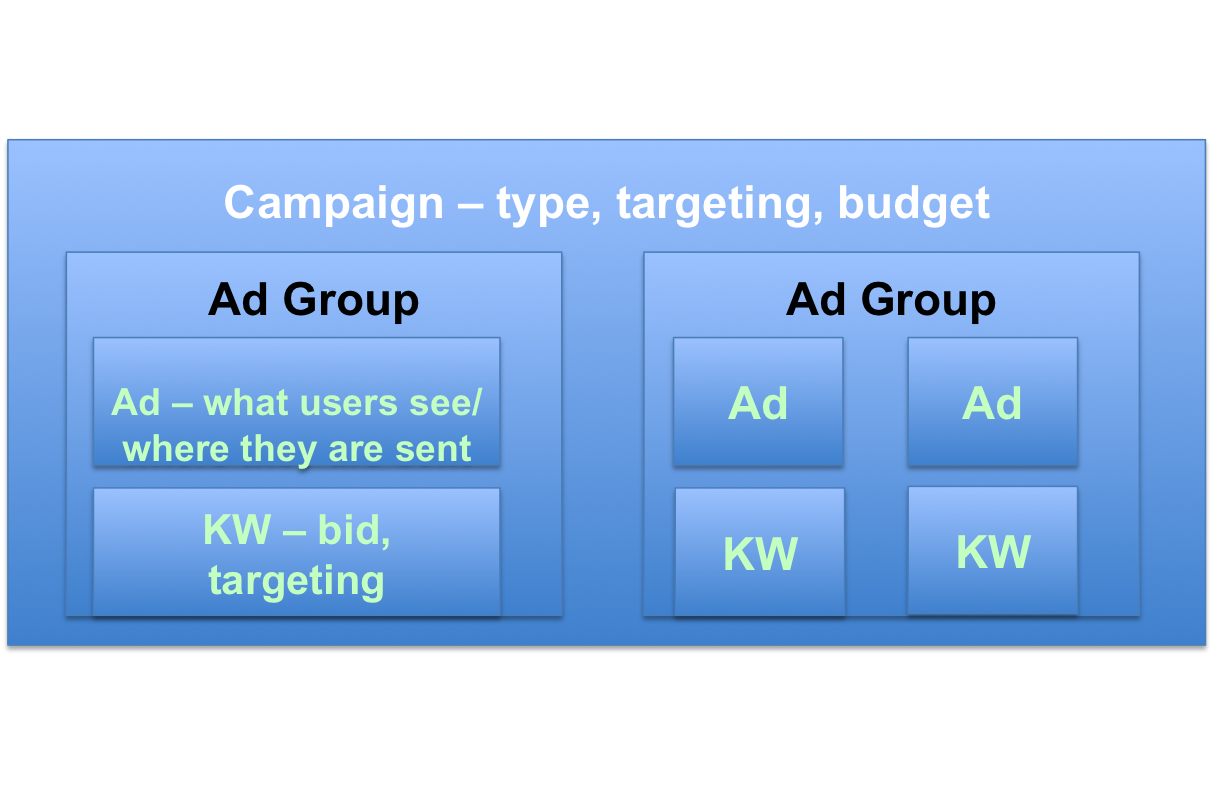
Display Ads
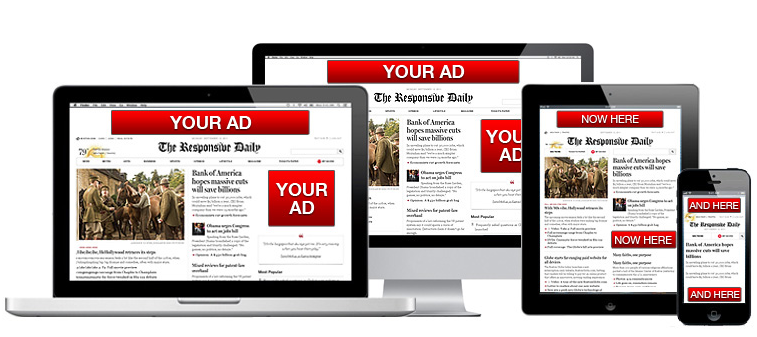
Affiliate/Influencer

Ad Targeting Matrix
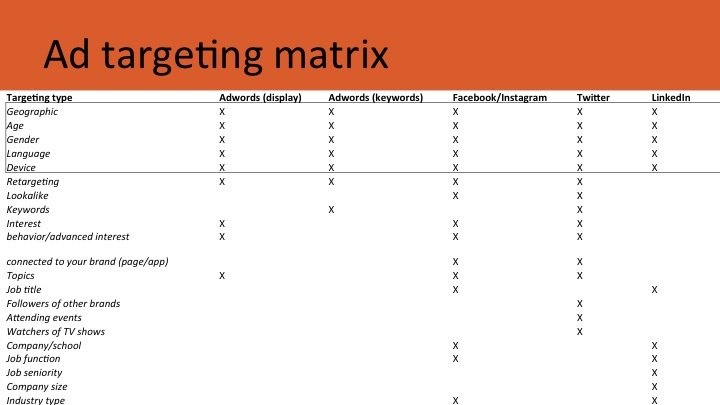
Great Facebook Ad
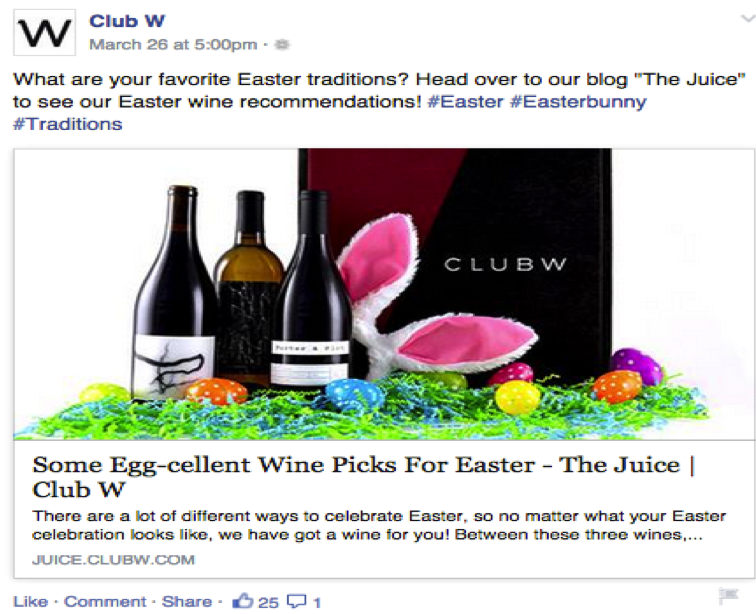
Great Facebook Ad

Great Instagram Ad
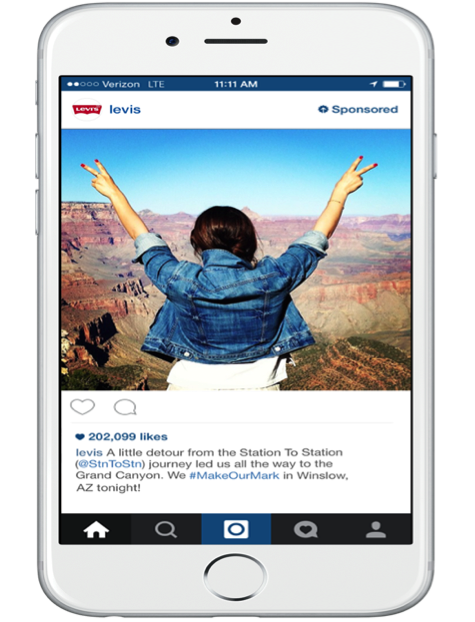
Great Twitter Ads
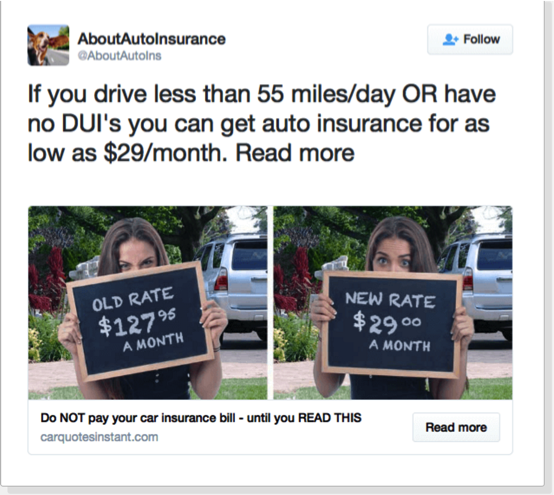
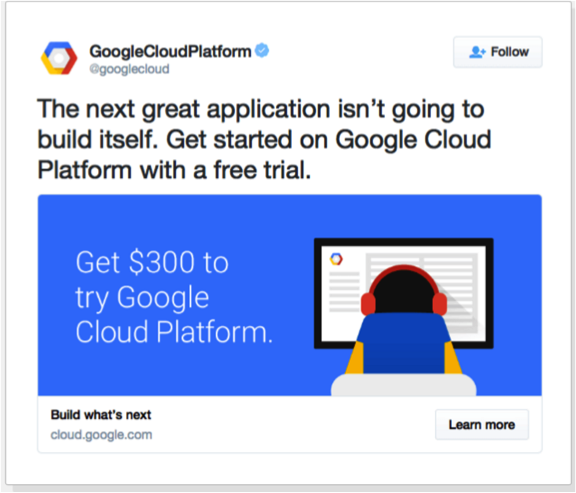
Great LinkedIn Ad
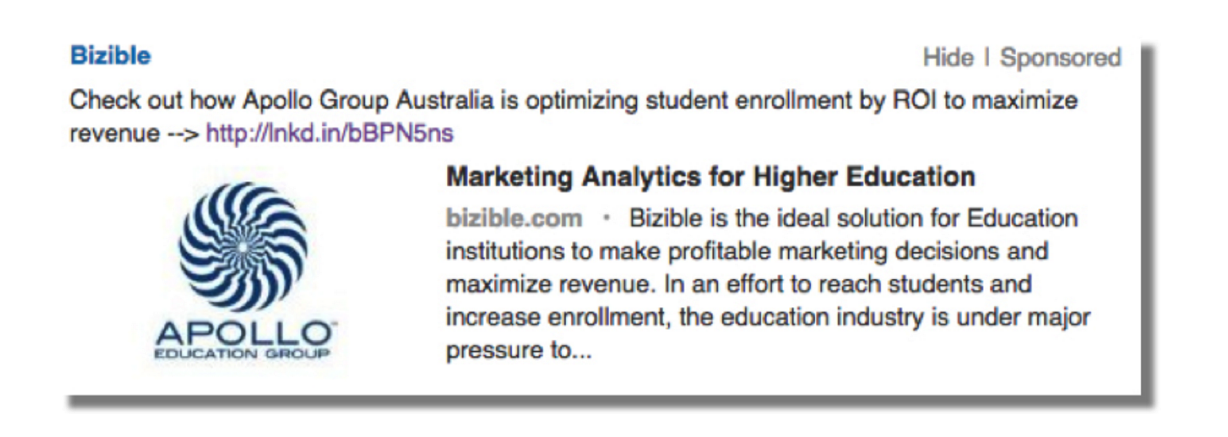
Great AdWords Ad

Hands-On Activity
You're the Consultant
Help! A company has just come to your digital agency seeking advice. Their business needs to grow their online presence, but doesn't know where to start. What channels and networks would you add to their digital marketing strategy, and why?
Assume each company has a website and a Facebook page and $500/month in budget. Their primary goal is to sell more product or services, with a focus on growing their online audience.
Take 10 minutes to think it out
Businesses:



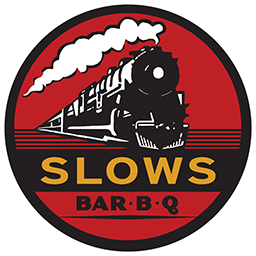
?
SEO
Getting more people to your website.
Index
- Breaking it down SERP style
- SEO factors
- Extra SEO-uffs
So, what is SEO?
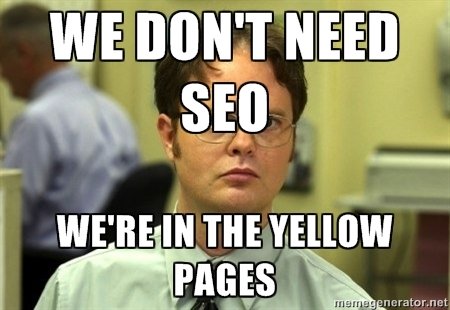
SEO (Search Engine Optimization) is the practice of driving high-quality traffic to your site by ranking at the top of the search engines organically, thanks to employing different tactics and strategies.
Breaking down a SERP
(Search Engine Results Page)
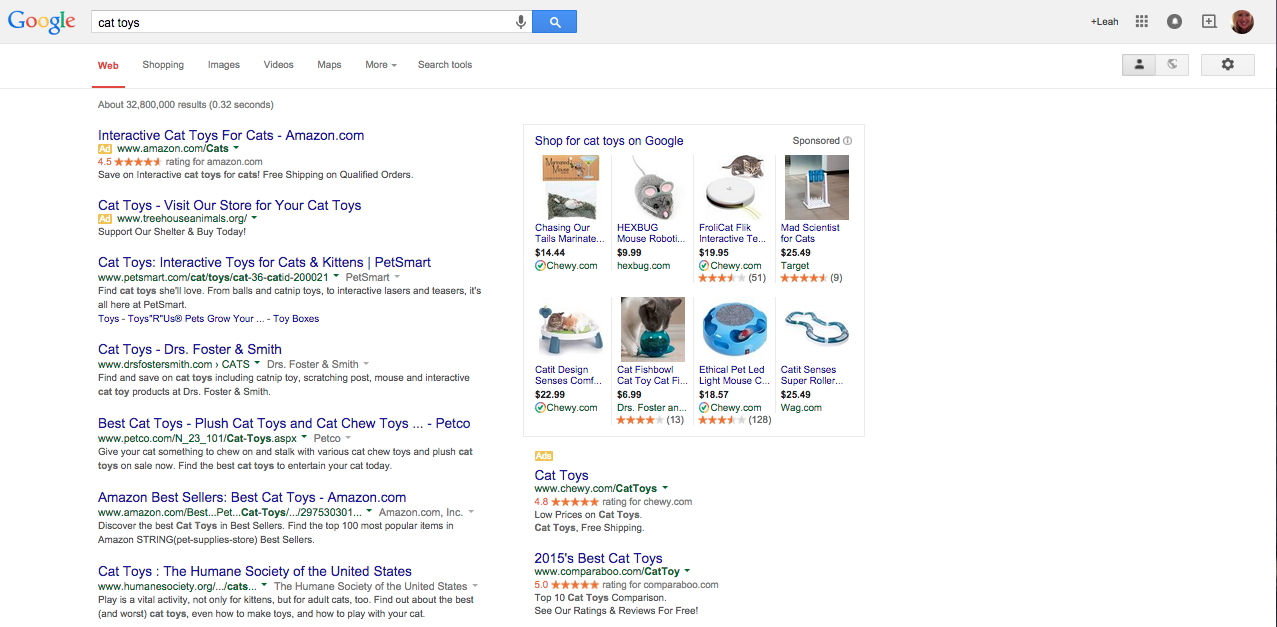
Breaking down a SERP
So Why was Drs. Foster & Smith and Petco ranked #1 and #2?
- Google's algorithm...shhh, it's a secret!
- We SEOs don't know all, but we do know some.
- Why a site is #1 (or has "good" SEO)
- The website itself
- Link building
- Social presence
- The searcher themselves!
Before we dive deep
Google updates it algorithm often! (We might argue too often).
Why, Google, must you destroy our SEO!? Why, Google Gods, why! *shaking fists at sky*
Because they are constantly improving
their search engine for the user.
Google sometimes announces when they
make an update to their algorithm, but
make sure to keep an ear to the SEO
community to hear how it's impacting sites.
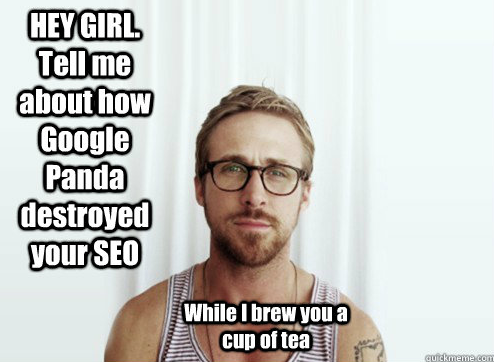
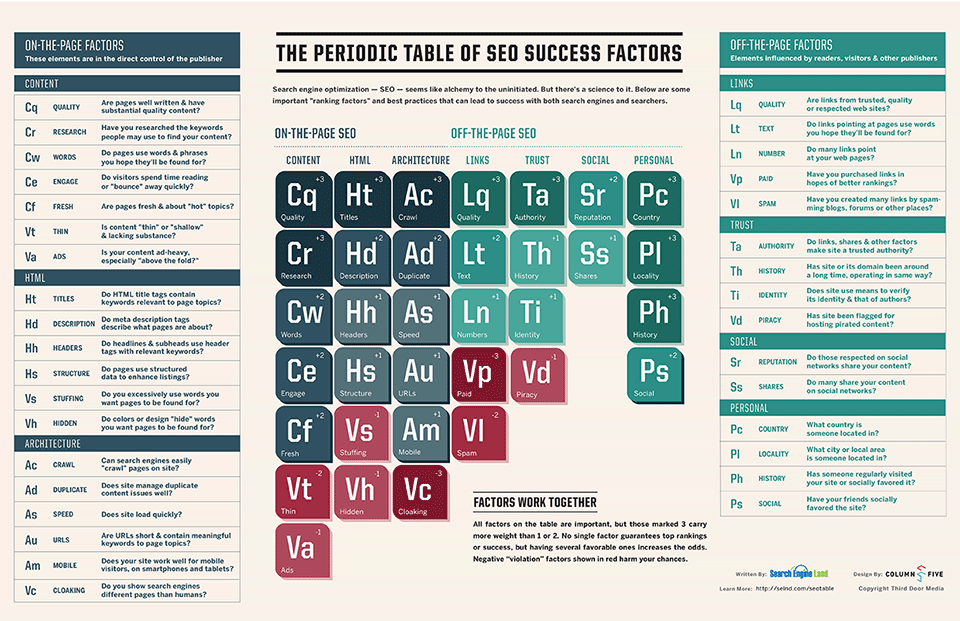
Courtesy of http://searchengineland.com/seotable
Your site itself
What is on your site and how it's built plays a huge role in your site's ranking. These factors include:
- Content, content, CONTENT!
- Metas, titles and keywords
- Image optimization
- Internal and outbound links
- Other items you might need a developer brain for
Content
Did I mention how important this is? We promise it's important...
- Don't keyword stuff.
- Think about what your audience would want to know (and what they're searching for).
- Write quality copy. Google likes to see upwards of 500-15000 words per page, but don't keyword stuff.
- NO KEYWORD STUFFING. STOP IT.

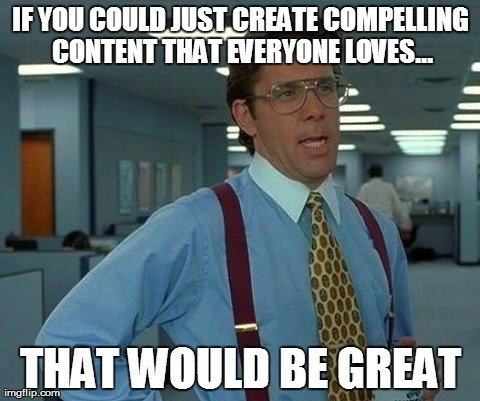
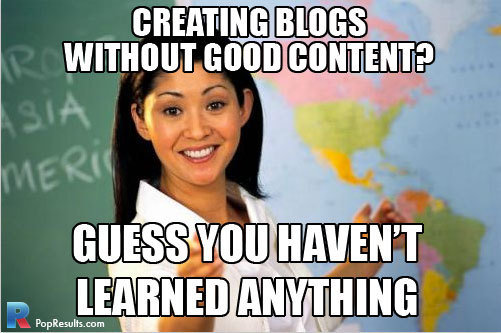
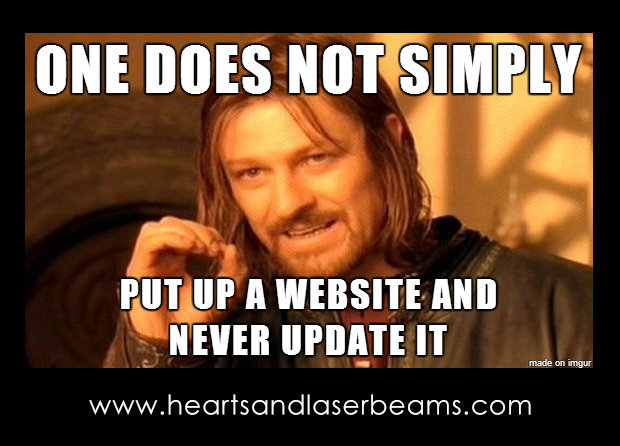
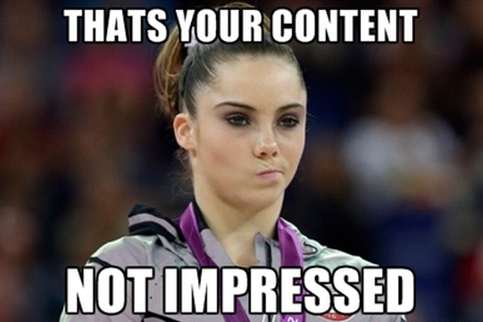


Did we mention quality content?
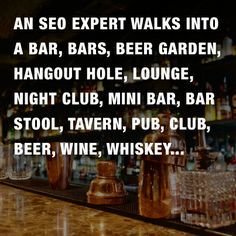
Content, metas & such
While writing the copy for your webpage, make sure to remember the following:
- Keyword Research (do this!). It's important that each page relates to one keyword, and the copy follows suite.
- Use Google Trends, Plugins, 3rd Party Research, Keyword Planner tool on AdWords, etc.
- Dependent on many factors including competition, search traffic, location, current ads, seasonality...
- Optimize your page's Title and Meta tags.
- If you're on WordPress, this is super easy.
What is a title & meta?
(You might ask?)
So, when I search for "Cat Toys"...

Image optimization
Images are important! But you have to optimize those too. Make sure to name the images:
- Title: Use dashes in-between words.
- Alt (or Alternate) Text: This should explain what the image is. Just adding normal spaces will do.
- Caption and Description optional.
Remember to add relevant, quality images. But don't add photos meant for a billboard--adding many of those will slow your site down.
Image optimization
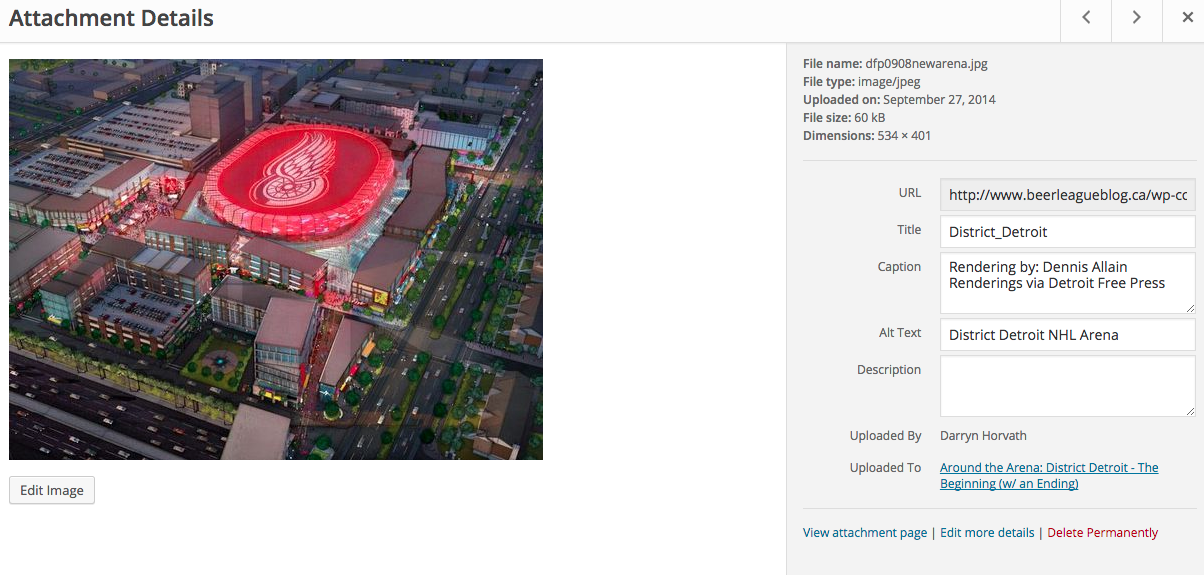
Internal & outbound links
Three types of links covered today:
Internal: Links connecting content within your site
Outbound: Links connecting your readers to other sites
Inbound: Links pointing to your site from another
And the techy items: **Developer optional
Google also looks for:
- An XML sitemap that's easy to crawl (there's a plugin for that)
- Schema Data (more microdata for search engines to read)
- An SSL certificate
- A responsive site
- Google Analytics and Webmaster Tools
- A fast website (Page Speed Insights)
Link Building
One of the oldest (and arguably) best ways to improve your site's ranking.
Many consider this "link building," but others like to consider "link earning." Be friends with the latter.
Can be done through:
- Blogging (back on the content wagon)
- Blogger/social outreach and identifying brand ambassadors
- Social sharing and engagement
- Forums
Be weary, good friends
This is where it gets tricky. Link building might seem easy, but if done incorrectly can cost your site.
Link building is an art. Wait, it's definitely a science....maybe some luck?
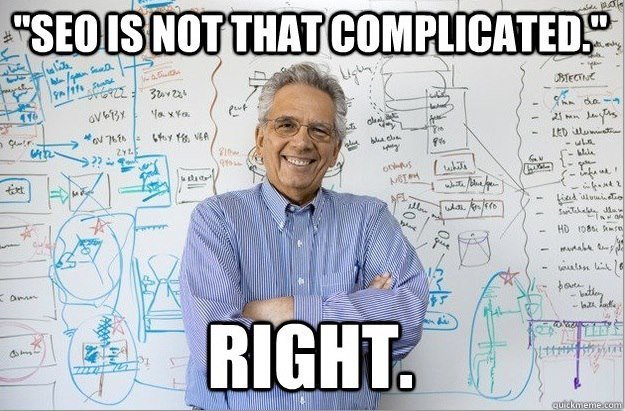
Your social presence
Social Media plays will continue to play an increasingly bigger role in your site's SEO.
This includes:
- The reputation and following of your channels
- The number of shares and comments on your posts (theoretically, you're posting your great blog posts on social, right?!)
- The social networks that are pointing to your site (think inbound links, but on social media)
- Frequency of posts
Google Loves Twitter
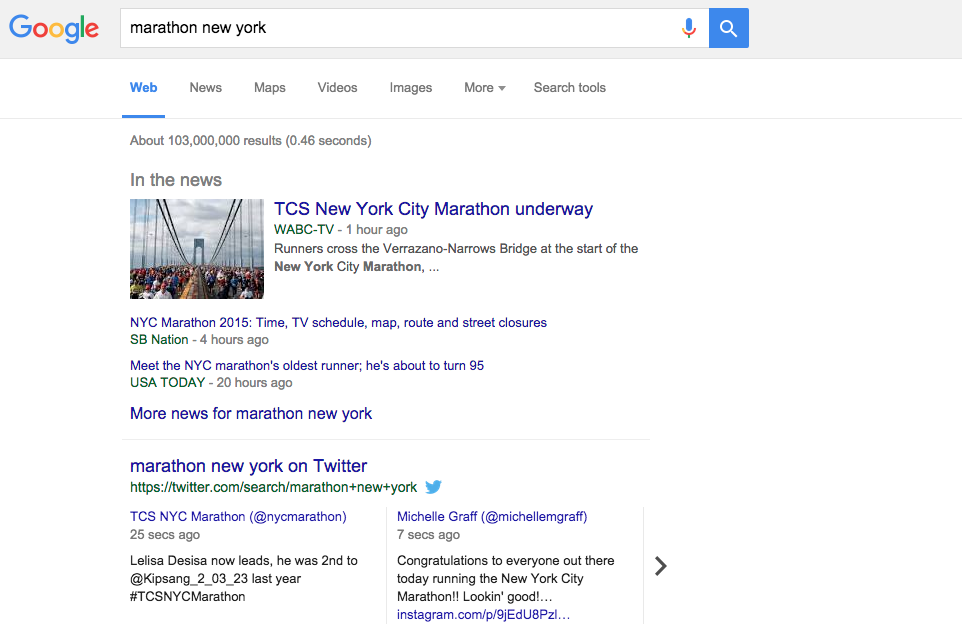
The all-powerful searcher
At the end of the day, it's all about your searcher. If your site is not converting (whatever a conversion may be), then what's the point?
Really, Google's algorithm, continual updates and the industry's preaching of "SEO" is for responsible web-making. Meaning we need to make the web a better place for searchers (and cat memes).
Black hat SEO v. White hat SEO

If what you're doing gives you a bad feeling in your gut, then you should probably stop, right? (True in most cases, minus pizza.)
Local search
Instead of searching for cat toys, we'll search for a...
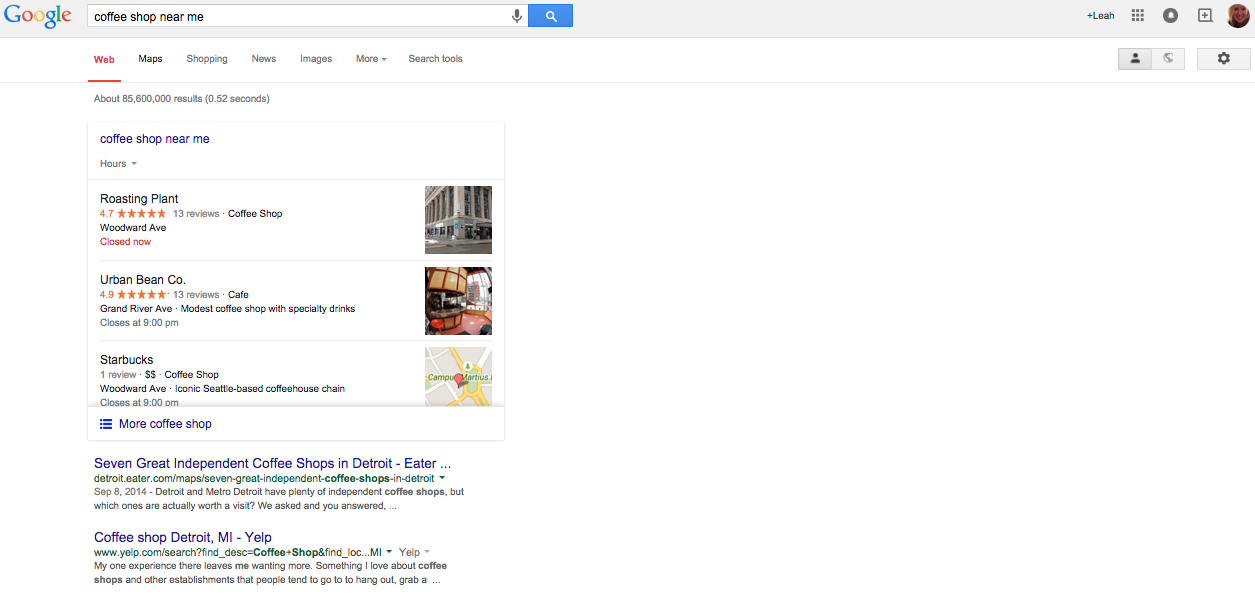
What that means
Instead of just displaying a normal SERP, we get the highlighted box that shows business that may apply, near our vicinity.
- Relies on a user's location
- May look different depending on search engines and actual search
- Sometimes shows images at the top of the SERP, a map of locations on the side, a list with markers, etc.
How to rank locally
Practicing proper SEO tactics will improve both your site's ranking and local search results. However, there are a few things you can do:
- Register all locations of your business on trustworthy directories (Yelp, Foursquare, TripAdvisor--whatever may apply).
- Make sure you have appropriate an Google My Business page(s), showing your location.
- List all locations on your website.
- Encourage your audience to review your business!
- Citations.
- Adding geographical markers in your metas & titles.
A citation...
"A citation is any mention of your business out on the web, with or without a link. It can come in various forms:
- Company name, by itself.
- Company name & phone number.
- Company name, phone number & address.
- Company name, phone number, address & link.
...Even just the phone number itself can be a citation... A complete citation should include the company name, address and phone number. A citation that does not include all three of these is sometimes referred to as a partial citation." -Darren Shaw
After you "SEO"
Ok, well, before you SEO, make sure to report where your site is currently ranking.
Afterwards, you'll be able to see how and by how much you've improved your site's rankings!
You can track your success by:
- Google Webmaster Tools
- Other site analytic platforms (Kissmetrics, MixPanel, the list goes on!)
- 3rd-party tools (Raven, Moz, etc.)
Keep on keepin' up
- Follow major blogs
- Follow industry leaders
- Follow companies
- Attend local events!
It's important to keep up with the industry (it's probably changed since the beginning of this class!).
Marketing Fundamentals (June 2016) DAY 1
By Leah Yanuszeski
Marketing Fundamentals (June 2016) DAY 1
- 200




